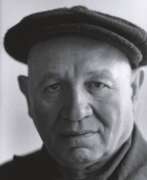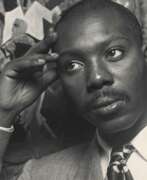Harlem Renaissance Harlem Artists Guild


Romare Bearden was an influential American artist, celebrated for his intricate collages that depict African American life. Born in 1911 in Charlotte, North Carolina, Bearden played a pivotal role in the Harlem Renaissance, associating with key figures like Duke Ellington and Langston Hughes. His artwork often explored themes of daily life, culture, and history through a unique blend of painting and collage, heavily influenced by Cubism and the Mexican muralists.
Bearden's most notable works include "The Block" and "Patchwork Quilt," both of which are praised for their vibrant narrative and depth, capturing the complexities of black urban life. His pieces are prominent in major museums like the Museum of Modern Art and the Metropolitan Museum of Art. Beyond visual arts, Bearden's legacy includes his contributions to literature and music, reflecting his diverse talents and intellectual interests.
For those interested in exploring Romare Bearden's art further, visiting collections where his works are held or reading more about his life and impact on American art and culture can be rewarding. For the latest updates on exhibitions and sales related to Bearden's work, sign up here [insert subscription link]. This will keep you informed about new opportunities to engage with Bearden's influential legacy.


Jacob Armstead Lawrence was a pioneering American artist, renowned for his dynamic cubism and profound portrayals of African-American life and history. Born in 1917 in Atlantic City, he moved to Harlem at a young age, where he was deeply influenced by the Harlem Renaissance. This vibrant cultural period helped shape his unique artistic style, which combined abstract expression with narrative elements.
Lawrence gained national recognition at just 23 years old with his 60-panel series "The Migration of the Negro" (later known as "The Migration Series"), which depicted the mass movement of African Americans from the rural South to the urban North. This work was first displayed at Edith Halpert's Downtown Gallery in 1941, making him the first African American artist to be represented by a mainstream New York gallery.
His art often depicted both historical and contemporary themes, making significant contributions to the representation of African American history in modern art. His works are housed in prestigious institutions such as the Museum of Modern Art (MoMA) and the Phillips Collection. In addition to painting, Lawrence also dedicated much of his life to teaching, influencing generations of artists at institutions like the University of Washington.
If you're keen to explore more about Jacob Lawrence's contributions to art and culture, consider subscribing for updates on exhibitions, sales, and auction events related to his work. This subscription will keep you informed about new discoveries and opportunities to engage with Lawrence's enduring legacy.